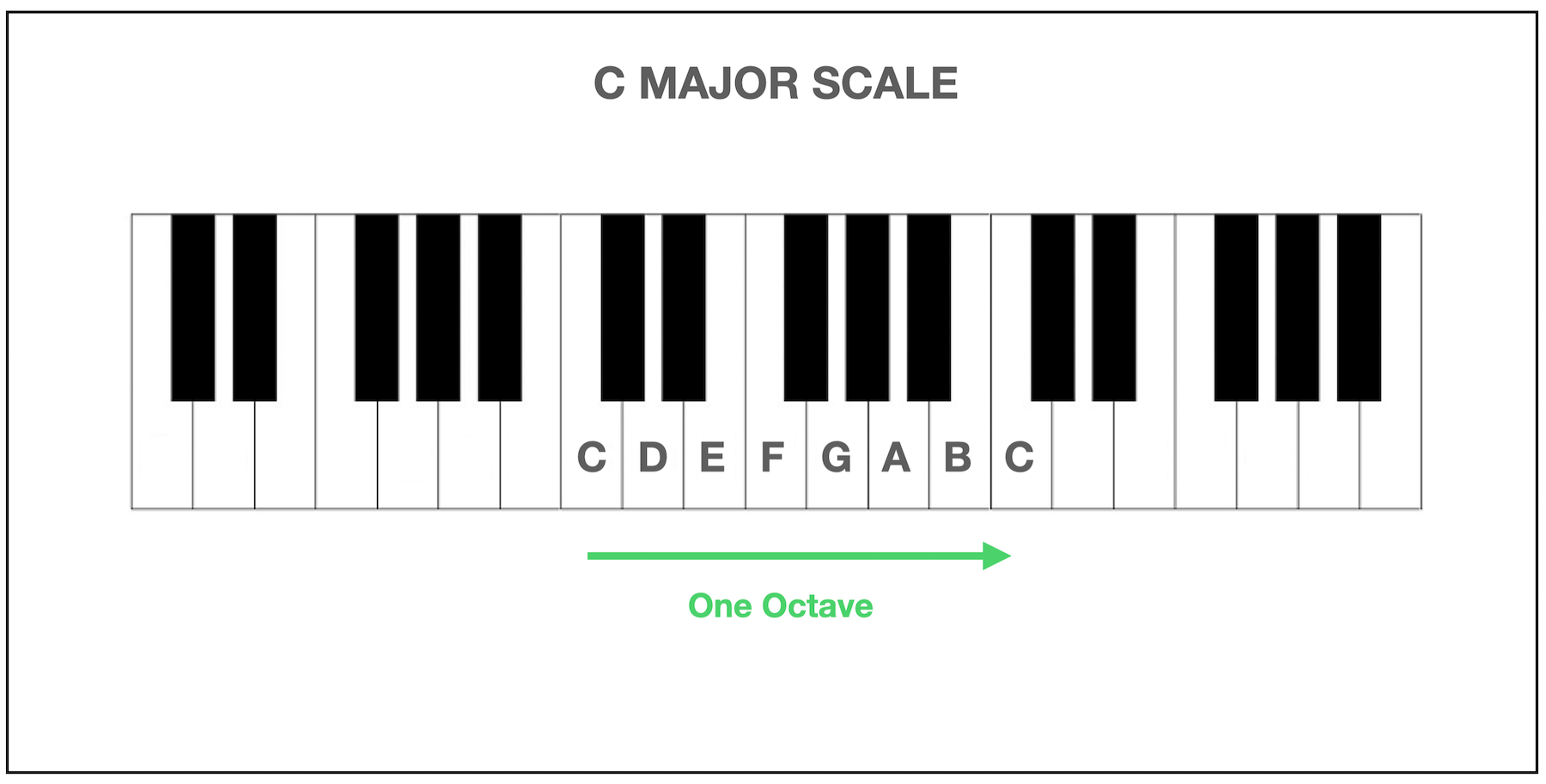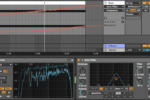Lydian mode: What is it and why you should care

What do Bart Simpson and Jurassic Park have in common? The Lydian mode! You may never have heard of it, but fear not, it’s not as scary as it might sound. And it’s a useful concept for improving creativity in your music production efforts.
So, let’s find out more about Lydian mode and why you should care about it.
Piano keyboard basics and the C-major scale
Sit down at a piano and you’ll see that there are white notes and black notes. Working from left to right, the black notes are organised into a set of two, then a set of three in each octave, with gaps between these groups of black notes.
The note ‘C’ is the white note just to the left of a group of two black notes.

C-major scale
If you play a C and then let your fingers wander up in pitch, one white note at a time, you’ll get to the C in the octave above (the next note just to the left of a pairing of two black notes) and when you reach that point, you’ll have played the scale of C major.

Play it again, and this time, count the ‘steps’ from one note to the next, taking note of whether you’re making a ‘whole tone’ step, where there is a black note between each step of the scale, or a ‘half tone’ step (often referred to as a semitone), where there isn’t a black note in between.
What you’ll find is that the scale of C major goes like this:

C
D (whole-tone from previous note)
E (whole-tone)
F (half-tone)
G (whole-tone)
A (whole-tone)
B (whole-tone)
C (half-tone)
F-major sale
If you were to start a scale on the note F, for example, and you kept the relationship between whole-tone and half-tone steps the same, you’d play the scale of F major instead: F, G, A, B flat, C, D, E, F.

Note that the B becomes flat (using the black note between A and B) because the step from the third note (A) to the fourth note (B flat) needs to be a half-tone if you want to play major scale. And if you keep the same relationship between whole-tone and half-tone steps, you can now play any major key scale, whether you start on D, or A, or F sharp. Not only is the list of notes above the C major scale, it’s also the Ionian Mode.
The 7 modes
There are seven different Modes and all of them use a different combination of whole-tone and half-tone steps, providing a different musical effect.
To understand Modes, the best way is to look again at the notes of C major and the steps between each note. We can see the list of steps with the scale starting on the note ‘C’. But if we played a scale of only the white notes but started on D instead, we’d play:
D
E (whole-tone)
F (half-tone)
G (whole-tone)
A (whole-tone)
B (whole-tone)
C (half-tone)
D (whole tone)
Again, we can see that there are five whole-tones and two half-tones but those steps come at different points in the scale. The first half-tone comes after just one whole-tone step, for example.
The Lydian mode
If you play a C major scale and start on F, you’re using the Lydian Mode. Its steps look like this:

F
G (whole-tone)
A (whole-tone)
B (whole-tone)
C (half-tone)
D (whole tone)
E (whole-tone)
F (half-tone)
The biggest difference between the Ionian Mode (starting on C) and the Lydian Mode is the raised fourth step. Confused? Look again at the notes of the scale of F major, if you were playing the conventional Ionian Mode:
F, G, A, B flat, C, D, E, F.
And compare that to the Lydian Mode, starting on F:
F, G, A, B, C, D, E, F.
There’s only one difference, which is that the B is flat in the F major scale, but what we call natural in the Lydian mode.
This ‘higher than expected’ note seems to elevate the scale, producing a slightly magical, celestial, ethereal quality which is why it’s so popular with film and TV composers, for instance.
Famous uses of the Lydian mode
Danny Elfman’s opening title music for The Simpsons is just one well-known piece of music using the Lydian mode, as is ‘Dreams’ by Fleetwood Mac.
One of the crucial musical opportunities offered by the Lydian mode is the second chord of the scale being major rather than minor. Remember, we don’t only use notes for playing scales or single-note melodies, we also use them to provide the chords which support those melodies.
Chords tend to use the first, third and fifth notes of a scale, so an F major chord is made up of F, A and C. Usually, if your song is in the key of F and you decide to play a G chord, it would be minor, using the notes G, B flat and D. But in the Lydian Mode, the B flat is raised a half-tone to B, so the chord becomes G, B and D – a G major chord.

So if you wrote a song in F major and used the Lydian Mode, suddenly both the F and the G chords are major, which gives the overall feel of your song a different tonal flavour.

Harmony and the Lydian mode
If you’re familiar with harmony, you might be wondering how F major and G major sound different in the Lydian Mode compared to, say, using them in the key of C major, where Chord IV and Chord V would be F major and G major respectively.
Context is the crucial thing here.
If you establish F as your key chord and use G major, both as a chord, and with B as a melody note, your composition will ‘sound Lydian’.
One way to do this is to play F major and then G major but to keep the bass note as F whilst you play the G chord, so that G plays over F.
Exactly that chord relationship of Major I and Major II is used by John Williams in his title theme for ‘Jurassic Park’.
What’s so great about the Lydian mode?
Why might the Lydian mode appeal to you?
Firstly, its has a tonal quality which is completely familiar and yet not quite the same as most music you hear, so it will immediately offer you a more original tonal base from which to build your track.
Secondly, it allows you to immediately paint different moods and emotions into your music. The Lydian mode can sound introspective and reflective, but it can also sound fun, bold and larger than life, as The Simpsons theme so capably demonstrates.
And thirdly, by carefully unlocking the secrets of the Lydian mode, you’re taking a step into a deeper understanding of the building blocks of song-writing and music production; melody and harmony.
Unlock your creativity
Ultimately, your understanding of how notes, keys and chords can fit together will shape your music, meaning that you’ll be rewarded for making the pool of your musical ideas as deep and full of creativity as you can.







